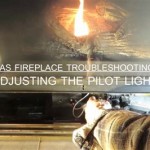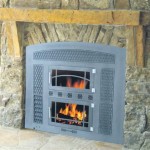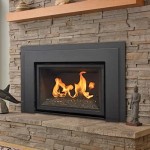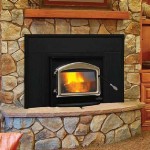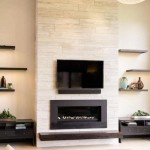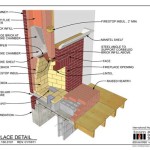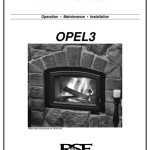Replacing a Wood Burning Fireplace with an Electric Insert: A Comprehensive Guide
Many homeowners with existing wood-burning fireplaces are exploring alternative heating methods. One increasingly popular option is replacing a traditional wood-burning fireplace with an electric fireplace insert. This shift offers several advantages, including improved energy efficiency, reduced maintenance, enhanced safety, and greater convenience. This article provides a comprehensive guide to understanding the process, benefits, and considerations involved in replacing a wood-burning fireplace with an electric insert.
An electric fireplace insert is essentially a self-contained electric fireplace unit designed to fit directly into an existing fireplace opening. These inserts are typically sized to match standard fireplace dimensions, allowing for a relatively seamless installation process. They operate by using electric heating elements to generate heat, and most models include realistic flame effects created by LED lights and simulated logs. The visual appeal, combined with the practical heating capabilities, makes electric inserts an attractive alternative to traditional wood-burning fireplaces.
The market offers a wide variety of electric fireplace inserts, differing in size, style, features, and heating capacity. Inserts can range from basic models focused on functionality to high-end units that closely mimic the appearance of a real wood-burning fire. Some inserts feature adjustable flame settings, thermostat controls, remote operation, and even built-in sound effects to further enhance the ambiance. Understanding the available options is crucial for selecting an insert that meets individual needs and preferences.
Assessing Your Existing Fireplace
Before purchasing an electric fireplace insert, the first step is to thoroughly assess the existing wood-burning fireplace. This assessment includes measuring the dimensions of the fireplace opening, inspecting the chimney and firebox for any damage or structural issues, and determining the availability of a suitable electrical outlet. Accurate measurements are essential for selecting an insert that will fit properly within the existing space. The width, height, and depth of the fireplace opening must be carefully recorded to ensure a snug and aesthetically pleasing fit.
A visual inspection of the chimney and firebox is equally important. Cracks, crumbling mortar, or other signs of damage may indicate underlying structural problems that need to be addressed before installing the electric insert. While an electric insert does not require a functioning chimney for venting smoke, a damaged chimney can pose a safety hazard. Consulting with a qualified chimney professional for a comprehensive inspection is recommended, especially if there are any signs of deterioration.
The electrical requirements of the electric fireplace insert must also be considered. Most inserts operate on a standard 120-volt outlet, but some larger models may require a dedicated 240-volt circuit. Verify the voltage and amperage requirements of the insert and ensure that the existing electrical system can handle the load. If a dedicated circuit is needed, a qualified electrician should be hired to install it safely and according to local electrical codes. Using an extension cord is generally not recommended, as it can overload the circuit and pose a fire hazard.
Preparation and Installation
Once the assessment is complete and the appropriate electric fireplace insert has been selected, the next step is to prepare the fireplace for installation. This typically involves cleaning the firebox, removing any debris or ash, and sealing any air leaks. A clean firebox provides a smooth and level surface for the insert to rest on. Sealing air leaks helps to prevent drafts and improve the overall energy efficiency of the home. This can be accomplished using caulk or weather stripping around the fireplace opening.
The installation process itself is generally straightforward and can often be completed by a homeowner with basic handyman skills. However, it is important to carefully follow the manufacturer's instructions to ensure proper installation and safe operation. The insert is typically slid into the fireplace opening and secured in place using screws or brackets. Some models may require additional wiring or connections to the electrical outlet. Again, if there is any uncertainty regarding electrical work, a qualified electrician should be consulted.
After the insert is installed, it is crucial to test its functionality. Verify that the heating element is working properly and that the flame effects are operating as expected. Check the thermostat and remote control (if applicable) to ensure that they are functioning correctly. It is also advisable to monitor the insert during its initial use to ensure that it is not overheating or producing any unusual odors. Regular maintenance, such as cleaning the vents and dusting the unit, will help to prolong the life of the electric fireplace insert and maintain its optimal performance.
Benefits of Electric Fireplace Inserts
Replacing a wood-burning fireplace with an electric insert offers several significant benefits. These advantages contribute to the growing popularity of electric inserts as a convenient, efficient, and environmentally friendly heating alternative. Key benefits include improved energy efficiency, reduced maintenance, enhanced safety, and increased convenience.
Electric fireplace inserts are generally more energy-efficient than traditional wood-burning fireplaces. Wood-burning fireplaces tend to lose a significant amount of heat through the chimney, while electric inserts provide targeted heat output and can be easily controlled with a thermostat. This allows for more precise temperature control and reduces overall energy consumption. Many electric inserts also feature zone heating capabilities, which allows you to heat only the room you are using, further reducing energy waste.
Maintenance requirements are significantly reduced with electric fireplace inserts. Unlike wood-burning fireplaces, which require regular cleaning, chimney sweeping, and wood storage, electric inserts require minimal maintenance. There is no ash to clean up, no creosote buildup to worry about, and no need to purchase or store firewood. Regular dusting of the unit and occasional cleaning of the vents are typically the only maintenance tasks required.
Safety is another key advantage of electric fireplace inserts. Wood-burning fireplaces pose several safety risks, including the potential for chimney fires, carbon monoxide poisoning, and burns from hot surfaces. Electric inserts eliminate these risks, as they do not produce smoke, flames, or carbon monoxide. The surface of the insert remains relatively cool to the touch, reducing the risk of burns. Most electric inserts also include safety features such as overheat protection and automatic shut-off.
Convenience is a major factor driving the adoption of electric fireplace inserts. With an electric insert, there is no need to chop wood, build a fire, or monitor the flames. The insert can be turned on and off with the touch of a button, and the temperature can be easily adjusted using a thermostat or remote control. This makes electric inserts an ideal heating solution for busy homeowners who want the ambiance of a fireplace without the hassle of a traditional wood-burning unit.
In addition to these core benefits, electric fireplace inserts offer several other advantages. They are available in a wide range of styles and designs to complement any décor. They can be easily installed in existing fireplaces, and some models can even be mounted on walls or used as freestanding units. Electric inserts are also environmentally friendly, as they do not produce smoke or emissions. This makes them a sustainable heating option for homeowners who are concerned about their environmental impact.
Furthermore, the cost of operating an electric fireplace insert is often lower than the cost of operating a wood-burning fireplace. While the upfront cost of an electric insert may be higher, the long-term operating costs are typically lower due to the reduced maintenance requirements and more efficient energy usage. The cost of firewood can fluctuate significantly, while the cost of electricity is generally more stable and predictable.
Despite these advantages, there are also some potential drawbacks to consider. Electric fireplace inserts may not provide the same level of heat output as a traditional wood-burning fireplace, especially in very large rooms. They also require a reliable source of electricity, so they may not be a suitable heating option during power outages. The appearance of the flames may not be as realistic as a real fire, although some high-end models offer very convincing flame effects. Careful consideration of these factors is essential for making an informed decision about whether an electric fireplace insert is the right choice.
Key Considerations Before Making the Switch
Before committing to replacing a wood-burning fireplace with an electric insert, several key considerations should be addressed. These considerations relate to the budget, the desired aesthetics, the heating needs, and the legal requirements. Addressing these factors will ensure a successful and satisfying transition to an electric fireplace insert.
Budget is a primary consideration. The cost of an electric fireplace insert can vary widely depending on the size, features, and quality of the unit. It is important to establish a realistic budget and compare prices from different retailers. In addition to the cost of the insert itself, consider the cost of installation, including any necessary electrical work or chimney repairs. Factor in the long-term operating costs, such as electricity consumption, to get a complete picture of the financial implications.
Aesthetics play a crucial role in the decision-making process. Electric fireplace inserts are available in a variety of styles, from traditional to modern. Choose an insert that complements the existing décor and matches the overall style of the room. Consider the color, finish, and design of the insert, as well as the appearance of the flames and logs. Some inserts offer customizable flame settings and backlighting options, allowing you to create a personalized fire experience.
Heating needs are another important factor to consider. Determine the size of the room that needs to be heated and choose an insert with sufficient heating capacity. Electric fireplace inserts are typically rated in terms of British Thermal Units (BTUs) or wattage. A higher BTU or wattage rating indicates a greater heating capacity. Consider whether the insert will be used as a primary or supplemental heating source. If it is intended as a primary heating source, it is important to choose an insert that can adequately heat the entire room.
Local building codes and regulations should also be taken into account. Check with the local building department to determine if any permits are required for installing an electric fireplace insert. Ensure that the installation complies with all applicable electrical codes and safety standards. Some jurisdictions may have specific requirements regarding the type of wiring, grounding, or surge protection that is required. Failure to comply with these regulations can result in fines or penalties.
Finally, consider the long-term implications of replacing a wood-burning fireplace with an electric insert. While electric inserts offer several advantages, they may not appeal to everyone. Some homeowners prefer the ambiance and authenticity of a real wood-burning fire. Others may view the transition to an electric insert as a loss of a traditional feature of their home. Consider these factors carefully and weigh the pros and cons before making a final decision.
How To Install An Electric Fireplace Insert

Convert A Gas Or Wood Fireplace To An Electric

Diy Fireplace Makeover How To Convert A Wood Burning An Touchstone Home S Inc

How To Convert Your Wood Burning Fireplace Electric Or Gas
Electric Fireplace Inserts Vs Logs Heat Glo

How To Convert A Fireplace Electric Part 2 Stylish Fireplaces

Fireplace Fix Easy Tips To Renovate Retrofit And Replace An Old Fire Touchstone Home S Inc

Fireplace Insert Installation Wood Inserts Gas Pellet And Electric

Modern Flames Redstone Electric Fireplace Insert 30 Woodland Direct

Wood Burning To Electric Fireplace Conversion

